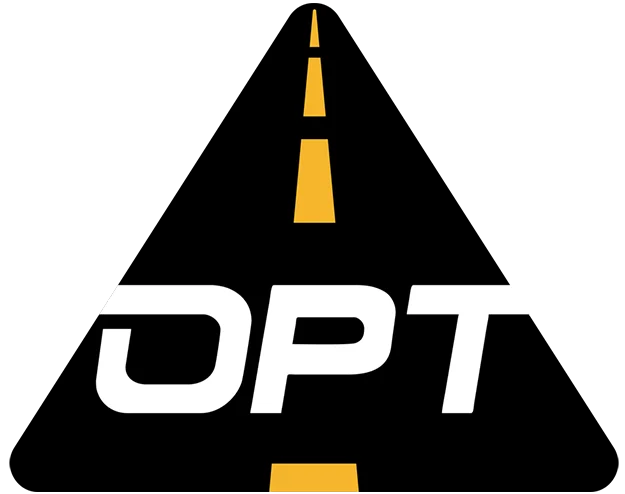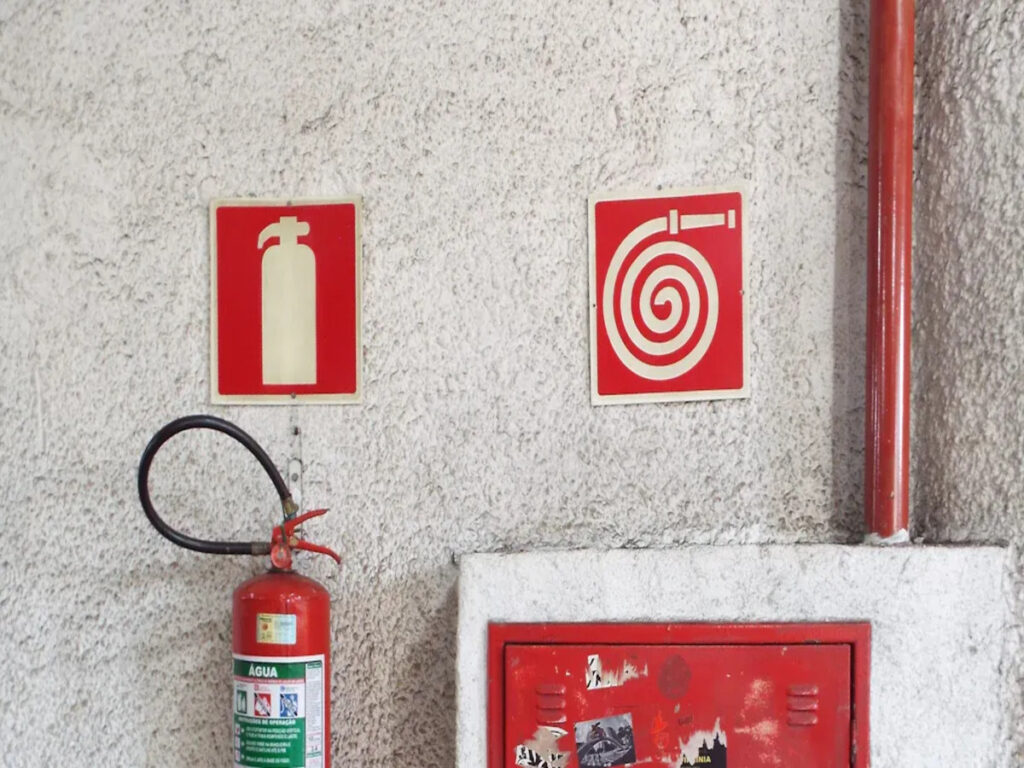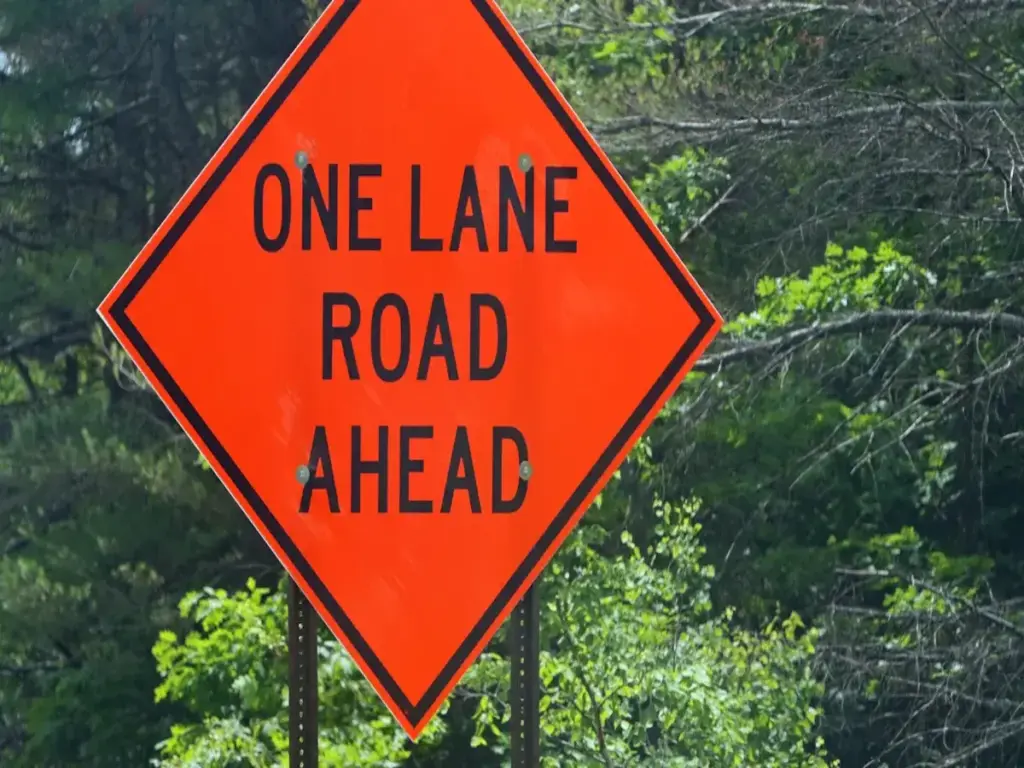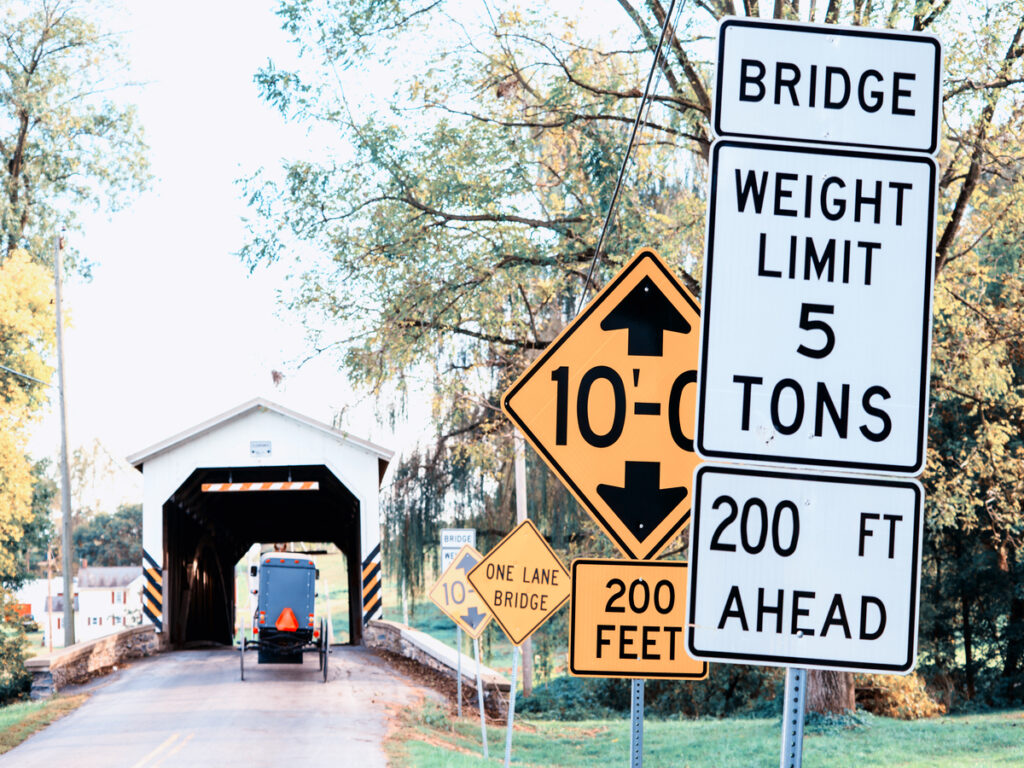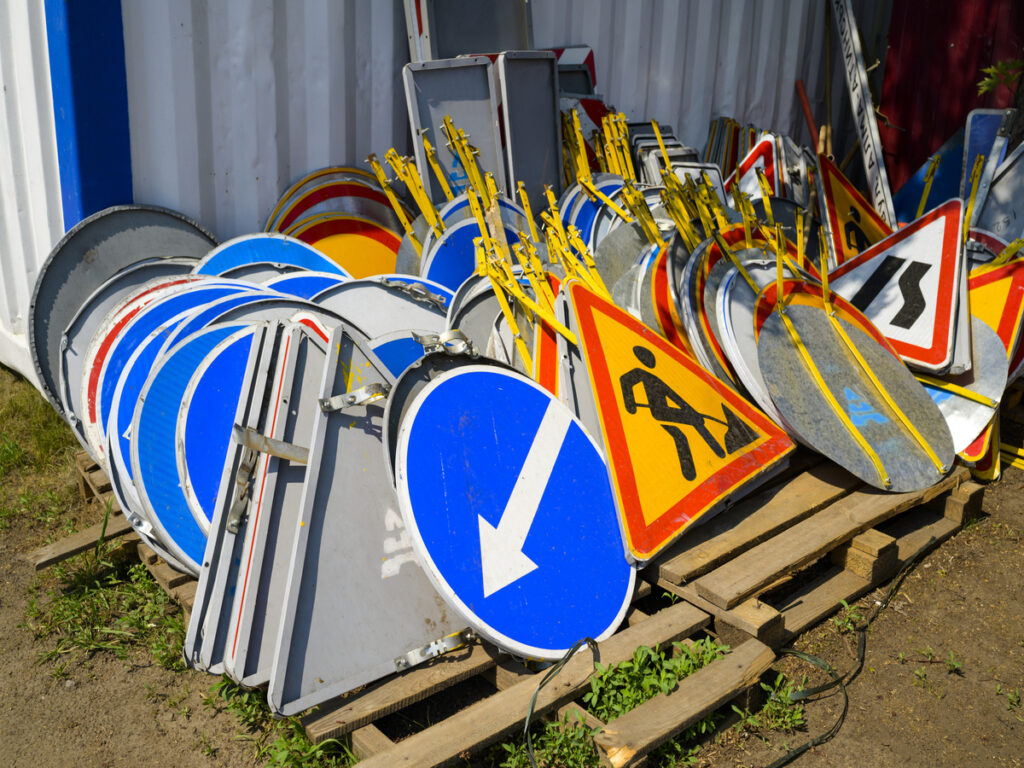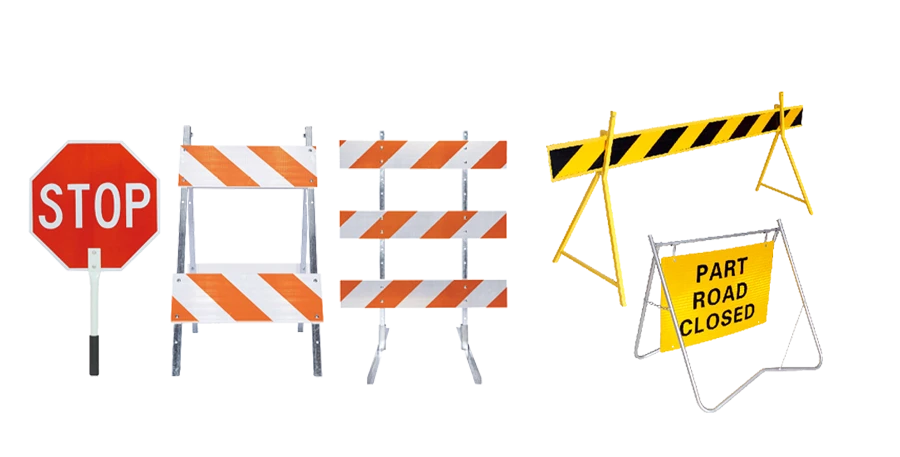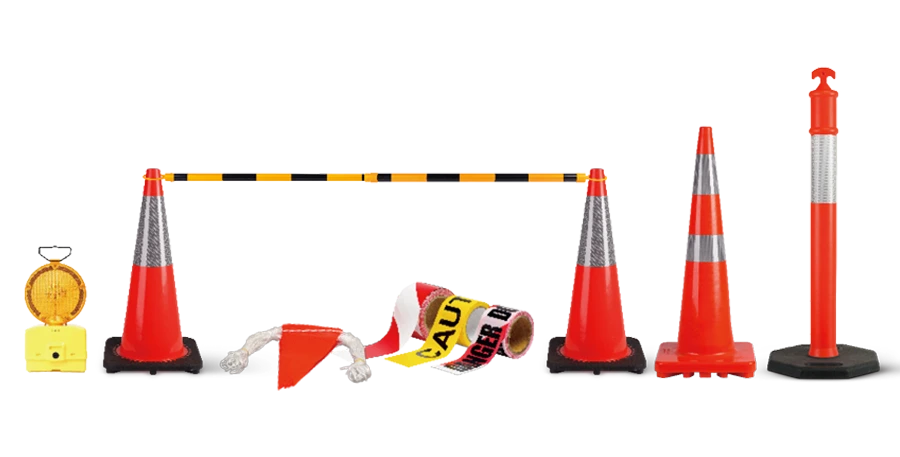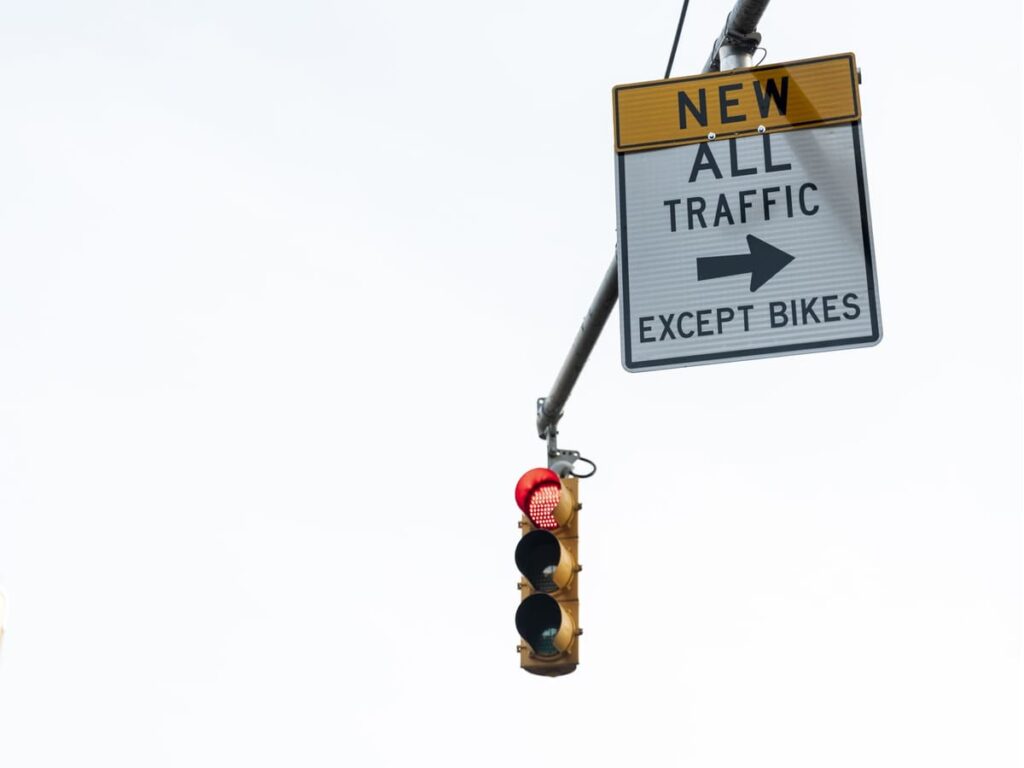
Los cierres de carriles en horas punta dificultan la gestión del tráfico en la ciudad. Las carreteras se llenan rápidamente, y la posibilidad de accidentes aumenta. Esto es peor cuando hay vehículos grandes como autobuses o camiones..
- Los atascos de tráfico en las horas punta de la mañana aumentan 5.87%. Los atascos de la hora pico de la tarde aumentan 6.57%.
- Los accidentes con autobuses o camiones provocan 6.03% Más atascos que accidentes solo con coches..
Dispositivos profesionales de control de tráfico., como una señal de control de uso de carril, ayudar a los conductores a prestar atención y mantenerse seguros. Los estudios muestran que estas señales y dispositivos hacen que las personas conduzcan más despacio y ayudan a evitar accidentes.
En OPTRAFICO, proporcionamos confiable Señales de control de tráfico que están diseñados para gestionar la congestión y mejorar la seguridad durante los cierres de carriles en horas pico. Nuestras señales de alta calidad, incluyendo control de uso de carril y señales de desvío, están diseñados para cumplir con los estándares MUTCD y garantizar una comunicación clara con los conductores. Usando nuestros signos, Las ciudades pueden reducir los accidentes., mejorar el flujo de tráfico, y mantener las carreteras más seguras.
Control de llave
- Cerrar carriles durante las horas punta puede provocar más tráfico y accidentes. Las agencias no deben cerrar carriles cuando las carreteras están congestionadas. Esto ayuda a que los autos se muevan mejor.
- Las señales de control de uso de carriles muestran a los conductores qué carriles están abiertos o cerrados. Las señales claras ayudan a los conductores a comprender y mantener a todos seguros.
- Los sistemas dinámicos de control de carril utilizan tecnología para cambiar de carril rápidamente. Esto ayuda a controlar el tráfico y acorta los retrasos..
- Los conductores deben estar atentos a las señales de control de uso de carril. Si los conductores siguen estas señales, no tendrán que cambiar de carril de repente. Esto mantiene el tráfico fluido.
- Conducir con seguridad en zonas de construcción es muy importante. Los conductores deben reducir la velocidad., mira con atención, y obedecer todas las señales. Esto mantiene a los conductores y trabajadores seguros.
Gestión del cierre de carriles en horas pico
¿Qué son los cierres de carriles en horas pico??
Los cierres de carriles en horas pico ocurren cuando las agencias cierran carriles en carreteras muy transitadas. Esto sucede cuando hay mucha gente conduciendo., como por la mañana o por la tarde. Estos momentos son cuando la gente va al trabajo o a la escuela y luego regresa a casa.. Las agencias tienen reglas para decidir cuándo y durante cuánto tiempo cerrar carriles. Revisan números de tráfico, cuantos autos puede contener la carretera, y que trabajo hay que hacer.
Las reglas de cierre de carriles ayudan a mantener los automóviles en movimiento al no cerrar los carriles durante las horas de mayor actividad. Las agencias intentan no cerrar carriles en días festivos o durante grandes eventos para que no haya más retrasos.
Algunas de las razones principales para cerrar carriles durante las horas pico son hacer que las carreteras funcionen mejor., accidentes inferiores, y arreglar las cosas. La siguiente tabla muestra por qué los estados cierran carriles:
| Motivo del cierre del carril | Número de estados |
|---|---|
| Para mejorar las operaciones | 14 |
| Para reducir los accidentes | 8 |
| Para consideraciones estructurales del pavimento. | 7 |
| Por restricciones en zonas de construcción. | 5 |
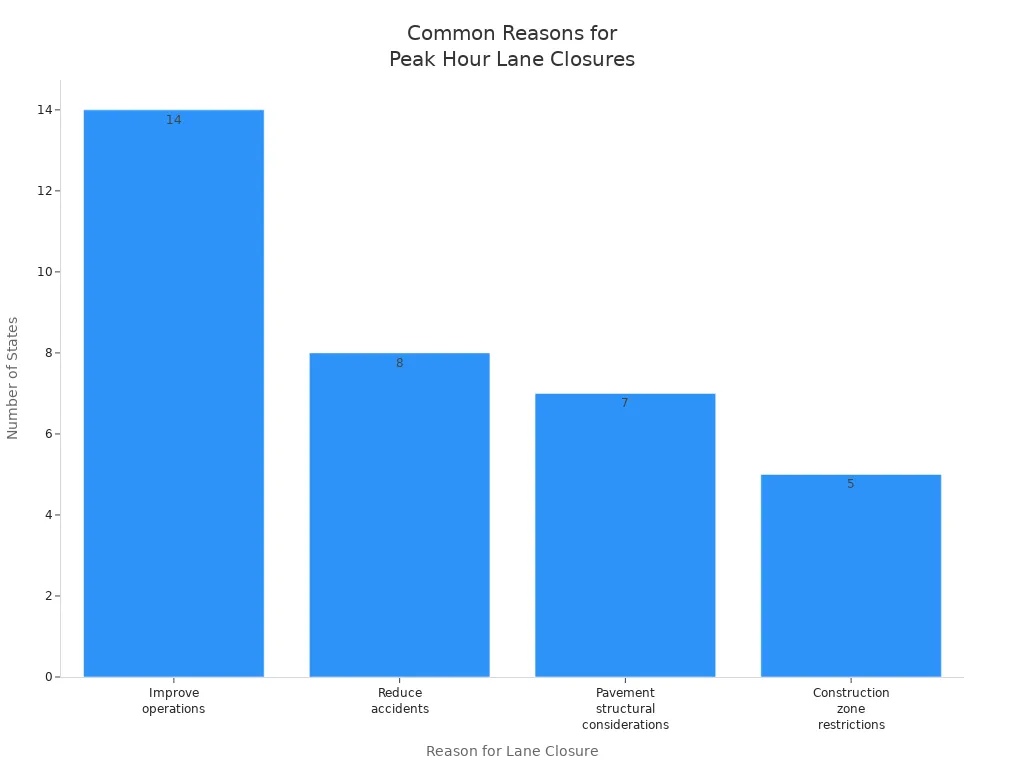
Otras razones son el tráfico intenso., preocupaciones de seguridad, demasiada contaminación, y mantener separados los diferentes vehículos.
¿Por qué son importantes las horas pico en el cierre de carriles??
Las horas punta importan porque hay más coches en la carretera. Si un carril se cierra en estos momentos, Los atascos y los accidentes pueden ocurrir más. Las agencias utilizan los números de tráfico para elegir el mejor momento para cerrar carriles. Quieren acabar con las largas colas y los grandes retrasos.
- Las reglas de cierre de carriles a menudo coinciden con cuándo conducen las personas y cuántos autos caben..
- Las herramientas electrónicas ayudan a elegir el mejor momento para cerrar carriles.
- Las agencias miran cuántos coches, que trabajo se necesita, seguridad, y desvíos.
Muchos coches durante las horas punta pueden formar largas colas. La fusión de cremalleras ayuda a que los automóviles se muevan mejor y reduce los tiempos de espera. Pero cerrar carriles durante las horas punta aún puede causar problemas. Los atascos ralentizan a todos, hacer que la gente se estrese, y le cuesta a las ciudades mucho dinero en tiempo perdido y gasolina..
Una buena planificación y las señales adecuadas ayudan a que los coches sigan en movimiento, incluso cuando los carriles deben cerrarse durante las horas de mayor actividad.
Desafíos y riesgos de los cierres de carriles
Congestión del tráfico durante el cierre de carriles
Cuando los carriles se cierran durante las horas punta, los atascos ocurren mucho. Los coches tienen que fusionarse, para que todos se muevan más lento. Algunos conductores se molestan o se confunden, que puede empeorar las cosas. Muchas cosas hacen que el tráfico se detenga cuando se cierran los carriles.. La siguiente tabla enumera las principales razones.:
| Causa de la congestión | Descripción |
|---|---|
| agrupamiento de vehículos | Cuando los autos reducen la velocidad, Se acercan más juntos. Esto hace que el tráfico se mueva en oleadas.. |
| Efectos visuales en los conductores | Los conductores se distraen o no pueden ver bien. Pueden reducir la velocidad para mirar las cosas.. |
| Cambios abruptos en el trazado de las carreteras | Las curvas cerradas o las zonas de trabajo hacen que los conductores reduzcan la velocidad. |
| Interrupción prevista del flujo de tráfico | Los semáforos y los peajes hacen que los coches se detengan y esperen. |
| Maniobras de incorporación de vehículos | Cuando los coches tienen que fusionarse, puede impedir que el tráfico se mueva. |
Otras cosas que causan problemas son:
- Los cierres de carriles y los desvíos provocan que los coches se amontonen.
- La entrega de materiales de construcción durante las horas punta empeora los atascos.
- Los trabajadores que conducen hacia y desde el sitio agregan más automóviles.
Los trabajos de construcción a menudo alteran la forma en que se mueve el tráfico. Las entregas y los coches extra de los trabajadores lo hacen aún más difícil.
Riesgos de seguridad y estrategias de mitigación
Muchos coches durante el cierre de carriles hacen que las cosas sean menos seguras. Más coches significan más posibilidades de sufrir accidentes. Es posible que los conductores no presten atención o se impacienten, que puede causar accidentes. La siguiente tabla muestra los mayores riesgos.:
| Riesgo de seguridad | Descripción |
|---|---|
| Tránsito pesado | Muchos coches durante el cierre de carriles pueden provocar atascos. |
| Mayor riesgo de accidentes | Más automóviles significan más posibilidades de accidentes si los conductores están distraídos o impacientes. |
Las agencias utilizan diferentes formas de mantener seguras a las personas:
- Siguen los planes de tráfico y colocan señales y marcas viales..
- Usan señales claras, conos, y barreras para mostrar a donde ir.
- Colocan tableros electrónicos para dar actualizaciones sobre cierres y velocidad.
- Hacen que los conductores vayan más lento en zonas de trabajo.
- Usan cámaras y señales de radar para comprobar qué tan rápido van los autos.
- Colocan barreras que ayudan a proteger a trabajadores y conductores en caso de accidente.
Consejo: Cuando los conductores miran las señales y conducen más lento, las zonas de trabajo son más seguras para todos.
El papel de las señales de control de carril
Funciones de las señales de control de uso de carril
Una señal de control de uso de carril indica a los conductores qué carriles utilizar. Muestra si un carril está abierto o cerrado.. A veces, muestra reglas especiales para un carril. Los conductores ven estas señales en lugares concurridos. Son comunes en zonas de construcción y durante las horas pico. Los letreros pueden decir cosas como “Manténgase a la derecha” o “fusionarse a la izquierda.” Algunas señales dicen “carril cerrado adelante.” Estos letreros ayudan a los conductores a saber qué hacer. Mantienen el tráfico en movimiento y seguro..
Las señales claras de control de carril ayudan a los conductores a tomar buenas decisiones. Los conductores saben cuándo cambiar de carril o reducir la velocidad. en michigan, un sistema dinámico de incorporación de carriles hizo que las zonas de trabajo fueran más seguras. También ayudó a detener la conducción agresiva.. Los carteles con imágenes ayudan a los conductores que no hablan bien inglés. La siguiente tabla muestra cómo estas señales ayudan a los conductores.:
| Descripción de la evidencia | Recomendaciones |
|---|---|
| Sistema dinámico de control de tráfico de incorporación de carriles en Michigan | Conducción menos agresiva, más seguridad, y menos demoras en el cierre de carriles en la zona de trabajo. |
| Comparación de pantallas gráficas vs.. mensajes de texto | Las imágenes en las señales ayudaron a los conductores a encontrar carriles abiertos y ayudaron a quienes no hablan bien inglés.. |
| Sistema VMS en zonas de trabajo | Las señales hicieron que los conductores cambiaran de carril antes y mantuvieran más espacio entre los coches. Esto hizo que disminuyeran la velocidad y se fusionaran mejor.. |
Consejo: Los conductores que miran las señales de control de uso de carril ayudan a mantener las carreteras seguras y el tráfico fluido..
Control dinámico de carril y flujo de tráfico
El control dinámico de carril utiliza tecnología para cambiar de carril rápidamente. Ayuda durante horas punta o trabajos en la carretera.. Los carriles para autobuses dinámicos ayudan a los autobuses a llegar a tiempo. Hacen que los tiempos de viaje sean más estables, incluso con mucho tráfico. Algunas ciudades utilizan el cambio de carril. Esto significa que un carril cambia de dirección para ayudar a que más autos se muevan..
- El control dinámico del uso del carril cambia de carril utilizando el tráfico en tiempo real.
- La inversión de carril da más espacio al lado más transitado.
- Estos sistemas ayudan a frenar los atascos y los retrasos.
- Ayudan a utilizar mejor los carriles y a adaptar más coches.
- Se producen menos accidentes porque los conductores siguen reglas claras.
Los sistemas dinámicos de control de carriles ahorran dinero a las ciudades. Las ciudades no necesitan tanto construir nuevas carreteras. Las herramientas de tráfico inteligentes pueden reducir los tiempos de viaje hasta en 20%. Las ciudades que utilizan estos sistemas tienen menos accidentes. Los conductores siguen mejor las reglas. Esto hace que las carreteras sean más seguras y menos estresantes para todos.
Diferentes tipos de señales de control de uso de carril
Señales de control de uso de carriles reglamentarios
Las señales de control de uso de carriles reglamentarios indican a los conductores lo que deben hacer en cada carril. Estas señales ayudan a todos a seguir las reglas y mantener el tráfico en movimiento de manera segura.. Los conductores ven estas señales en las intersecciones concurridas, en carreteras, y cerca de zonas de trabajo. Cada cartel tiene un mensaje claro., para que los conductores sepan si pueden girar, Siga derecho, o utilizar un carril especial. Aquí hay una tabla que muestra algunos tipos comunes y su significado.:
| Tipo de signo | Función |
|---|---|
| Señal de carriles de solo giro | El tráfico sólo podrá circular en las direcciones que se muestran para cada carril.. |
| Señal de sólo seguir recto | No se permiten giros; debe conducir recto. |
| Señal de solo giro a la derecha | Todos los vehículos en este carril sólo deben girar a la derecha.. |
| Concurrente (Centro) Giro a la izquierda | Carril de doble sentido para girar a la izquierda en ambas direcciones. |
| Señal de control de carril reversible | Muestra cuando un carril está abierto al tráfico en cualquier dirección. |
| HOV 2+ Firmar | Sólo vehículos con 2 o más personas pueden usar este carril. |
| No hay señal de giro a la derecha/izquierda | Prohíbe girar a la derecha o a la izquierda.. |
| No hay señal de giro en U | Prohíbe hacer un cambio de sentido. |
Estas señales ayudan a los conductores a tomar decisiones rápidas y evitar confusiones, especialmente durante el cierre de carriles.
Señales de advertencia de cierre de carriles
Las señales de advertencia de cierre de carriles alertan a los conductores sobre los cambios que se avecinan. Estos letreros usan colores y formas brillantes para llamar la atención.. La mayoría de las señales de advertencia tienen forma de diamante y son fáciles de detectar.. Advierten sobre obras viales, cierres de carril, u otros peligros. Los conductores suelen ver una serie de estas señales., comenzando con “Trabajo por carretera por delante” y terminando con “OBRA FINAL DE LA CARRETERA.” La orden ayuda a los conductores a prepararse para lo que se avecina.
Consejo: Las señales de advertencia dan tiempo a los conductores para reducir la velocidad y cambiar de carril de forma segura.
Señales de guía y desvío para la gestión de carriles
Guía y letreros de desvío juegan un papel importante durante el cierre de carriles. Estas señales muestran a los conductores a dónde ir cuando un carril está cerrado. Señalan desvíos y ayudan a los conductores a encontrar la mejor ruta alrededor de las zonas de trabajo.. Siguiendo estos signos, Los conductores evitan quedarse atrapados en el tráfico o realizar movimientos inseguros.. Las señales de guía y desvío mantienen el tráfico fluido y reducen el estrés de todos en la carretera..
Una señal de control de uso de carril, junto con señales de guía y desvío, ayuda a los conductores a mantenerse informados y seguros durante las horas punta.
Comprender el cumplimiento de MUTCD
Estándares clave de MUTCD para cierres de carriles
El Manual en dispositivos de control de tráfico uniformes (Muescato) proporciona reglas para el uso de señales de control de uso de carril cuando los carriles están cerrados. Estas reglas ayudan a mantener a las personas seguras y al tráfico en movimiento.. Cuando las agencias siguen estas reglas, Los conductores obtienen instrucciones claras y saben qué hacer..
A continuación se muestran algunos estándares MUTCD importantes para señales de control de uso de carriles.:
| Estándar | Descripción |
|---|---|
| 01 | Las señales de control de uso de carril deben funcionar de la misma manera en toda la vía.. |
| 02 | Ciertas combinaciones de señales no pueden mostrarse al mismo tiempo en un carril. |
| 03 | Un carril en movimiento debe terminar con una X ROJA o una X AMARILLA, luego una X ROJA. |
| 04 | Cuando una FLECHA VERDE cambia a una FLECHA BLANCA DE GIRO A LA IZQUIERDA DE DOS VÍAS, una X ROJA debe mostrarse en la otra dirección. |
| 05 | El control manual debe estar listo para anular los sistemas automáticos.. |
| 07 | Las señales de control de uso de carriles deben permanecer encendidas a menos que se indique lo contrario.. |
Las agencias implementan señales de control de uso de carriles por varias razones: cuando varios carriles cambian de dirección, cuando se permiten giros a la izquierda durante las horas pico, cuando los patrones de carriles no son convencionales, en áreas con un historial de accidentes, o cuando los estudios indican que mejoran la seguridad y el flujo de tráfico.
Los conductores ven estas señales y saben qué hacer:
- Una FLECHA VERDE HACIA ABAJO fija significa que el carril está abierto.
- Una X AMARILLA fija significa que está preparado para abandonar el carril..
- Una X ROJA fija significa que el carril está cerrado..
Seguir los estándares MUTCD ayuda a los conductores a no confundirse. Mantiene a todos más seguros cuando se cierran los carriles.
La importancia de los materiales reflectantes y resistentes a los impactos
MUTCD también dice todos los dispositivos de control de tráfico., como señales de control de carril, Debe utilizar materiales reflectantes y resistentes a los golpes.. Estos materiales hacen que las señales sean fáciles de ver., Incluso por la noche o en mal tiempo. Los materiales de alta visibilidad rebotan en los faros, para que los conductores puedan detectar las señales desde lejos. Esto es muy importante porque casi la mitad de todas las muertes por accidentes de tránsito ocurren de noche., aunque menos personas conducen de noche.
| Tipo de requisito | Descripción |
|---|---|
| Resistencia al choque | Los dispositivos deben ser seguros si son atropellados por un coche, siguiendo los estándares nacionales de pruebas de choque. |
| Definición | 'Digno de estrellarse’ significa que el dispositivo pasó pruebas de choque como las del Informe NCHRP 350. |
| Cumplimiento | Todos los dispositivos deben cumplir con las reglas MUTCD. |
- Las agencias deben mantener la reflectividad de las señales en o por encima de los niveles mínimos establecidos por MUTCD.
Consejo: Las señales reflectantes y a prueba de choques ayudan a los conductores a ver los cambios que se avecinan. Ayudan a proteger a todos en la carretera., día o noche.
Gestión del flujo de tráfico durante el cierre de carriles
Colocación estratégica de letreros para un flujo óptimo
Los administradores de tráfico saben que la ubicación de las señales es muy importante. Una buena colocación de señales permite a los conductores ver los cambios con antelación. Cuando los conductores vean señales pronto, tienen más tiempo para reaccionar. Esto ayuda a que el tráfico siga en movimiento y evita frenadas repentinas..
Usan diferentes señales para diferentes trabajos.. Algunas señales advierten sobre el cierre de carriles más adelante. Otras señales muestran a los conductores adónde ir o qué carril usar.. Las señales colocadas lejos de la zona de trabajo dan tiempo a los conductores para incorporarse. Por ejemplo, a “Lane cerró por delante” El letrero funciona mejor cuando está lejos del cierre.. Los conductores podrán entonces cambiar de carril sin prisas..
Los gerentes también usan conos y barrera para ayudar a guiar los autos. Estas herramientas muestran a los conductores el camino correcto a seguir. Cuando se usan letreros y conos juntos, el tráfico se mueve mejor. Los conductores se sienten menos perdidos y más seguros de qué hacer.
Consejo: Las señales claras que llegan temprano ayudan a todos a mantener la calma y evitar cambios de carril de último momento..
Actualizaciones en tiempo real y soluciones de señalización dinámica
Las carreteras modernas utilizan señales inteligentes para brindar a los conductores nueva información. Estas señales pueden cambiar los mensajes a medida que suceden cosas en la carretera.. Ayudan a los conductores a evitar los atascos y a encontrar el mejor camino a seguir.
Aquí hay algunos comunes tipos de signos dinámicos y como ayudan:
| Tipo de signo | Cómo ayuda a los conductores |
|---|---|
| VMS de matriz completa | Proporciona actualizaciones en tiempo real sobre cierres de carriles y desvíos. Los conductores saben qué esperar. |
| Señales de mensaje cambiantes | Muestra las condiciones actuales de la carretera.. Los conductores pueden evitar caminos bloqueados y tráfico pesado.. |
| Señales de mensajes dinámicos | Se adapta a nuevas situaciones.. Puede advertir sobre emergencias o cambios repentinos.. |
Estas señales utilizan sensores y cámaras para vigilar el tráfico.. cuando algo cambia, La actualización de los signos de inmediato. Los conductores ven nuevos mensajes y pueden tomar decisiones rápidas. Esto mantiene el tráfico en movimiento y ayuda a evitar accidentes..
Nota: Las actualizaciones en tiempo real de las señales dinámicas hacen que las carreteras sean más seguras y menos estresantes para todos.
Estudios de caso de gestión exitosa del cierre de carriles
Ciudad de Nueva York: Estrategias de cierre de carriles
La ciudad de Nueva York tiene algunas de las carreteras más transitadas del país.. Los líderes de la ciudad querían hacer las calles más seguras y menos concurridas. Se centraron en la zona de alivio de la congestión.. Iniciaron nuevas estrategias de cierre de carriles. Estas estrategias utilizaron señales claras de control de uso de carriles y actualizaciones en tiempo real.. Los gestores de tráfico también intentaron reducir el número de coches en las zonas más transitadas..
Esto es lo que sucedió después de que comenzaron los nuevos planes.:
- Las muertes por accidentes de tránsito en la zona de alivio de la congestión se redujeron en 40% del año pasado.
- Ningún conductor murió en la zona tras los cambios.
- La ciudad quería cortar 80,000 viajes cada día en la zona de alivio de la congestión.
- Los líderes pensaron que estos cambios reducirían el tráfico en 10% en el área.
Estos resultados demuestran que una planificación inteligente y una buena señalización ayudan mucho. Los conductores se sintieron más seguros, y las calles estaban menos concurridas. Las personas podían llegar a donde necesitaban ir con menos estrés.
Los Angeles: Optimización del flujo de tráfico durante el cierre de carriles
Los Ángeles también tiene mucho tráfico y muchos cierres de carriles.. Los urbanistas utilizaron dispositivos avanzados de control de tráfico y señales dinámicas.. Querían mantener los coches en movimiento y reducir la contaminación durante los grandes proyectos de construcción..
La siguiente tabla muestra cómo Los Ángeles midió el éxito.:
| Ciudad | Reducción del tiempo de viaje | Reducción de emisiones |
|---|---|---|
| Los Angeles | 12% | 3-4% |
Los tiempos de viaje disminuyeron 12%. Las emisiones disminuyeron 3-4%. Estas cifras significan que los conductores pasaron menos tiempo en el tráfico y el aire se volvió más limpio.. Los Ángeles demostró que el uso de señales inteligentes y actualizaciones en tiempo real ayuda a todos en la carretera.
Cuando las ciudades utilizan las estrategias correctas de cierre de carriles, La seguridad y el flujo de tráfico mejoran para todos..
Mejores prácticas para la señalización de control de uso de carriles
Diseño de señales de control de carril efectivas
Las buenas señales de control de carril ayudan a los conductores a acelerar, elecciones seguras. Las ciudades utilizan reglas especiales cuando diseñan estas señales.. Estas reglas ayudan a garantizar que cada letrero sea fácil de ver y leer.. La siguiente tabla enumera las principales reglas de diseño.:
| Principio de diseño | Descripción |
|---|---|
| Visibilidad | Los paneles de señales deben ser claramente visibles para 700 metro (2,300 pie) en condiciones normales. |
| Colocación | Las señales deben ubicarse en línea recta a lo largo de la carretera., aproximadamente en ángulo recto con respecto a la alineación de la carretera. |
| Altura | La parte inferior de la carcasa de la señal debe estar entre 4.6 metro (15 pie) y 5.8 metro (19 pie) por encima del pavimento. |
| Indicaciones de señal | Cada carril debe tener una FLECHA VERDE HACIA ABAJO y un símbolo de X ROJA para carriles reversibles.. |
| Coordinación | Todas las señales deben funcionar de manera uniforme para evitar mostrar combinaciones prohibidas de señales.. |
Cuando las ciudades usan estas reglas, Los conductores pueden ver las señales desde lejos.. Los conductores saben qué carril elegir y cuándo cambiar de carril. Esto mantiene el tráfico en movimiento y ayuda a detener los bloqueos.
Consejo: Las señales claras y fáciles de encontrar ayudan a mantener las carreteras seguras para todos.
Aprovechando los sistemas inteligentes de gestión del tráfico
Los sistemas de tráfico inteligentes hacen que las señales de control de carriles funcionen aún mejor. Estos sistemas utilizan sensores y cámaras para observar el tráfico a medida que ocurre.. Recopilan información sobre la velocidad de los coches y dónde empiezan los atascos.. Luego, el sistema puede cambiar las señales para adaptarse a lo que está sucediendo..
- Sensores y cámaras de IoT comprueban la velocidad de los coches y vigilan el tráfico.
- El sistema utiliza esta información para cambiar las luces verdes de los carriles ocupados..
- La sincronización adaptativa de las señales ayuda a detener los atascos durante las horas punta.
- Los conductores esperan menos y el tráfico se mueve con mayor fluidez.
Las ciudades que utilizan estos sistemas inteligentes tienen menos desaceleraciones. Los conductores reciben actualizaciones de inmediato y pueden confiar en las señales para ayudarlos a mantenerse seguros..
Consejos para conductores durante el cierre de carriles
Cómo leer eficazmente las señales de control de uso de carril
Los conductores suelen ver muchas señales durante el cierre de carriles, pero no todos los signos significan lo mismo. Una señal de control de uso de carril brinda instrucciones claras sobre qué carriles están abiertos o cerrados. Los conductores deben buscar flechas., Símbolos X, o palabras como “Carril cerrado” o “Fusionar a la izquierda.” Estas señales generalmente cuelgan sobre la carretera o se encuentran al costado de la carretera..
A continuación se ofrecen algunos consejos rápidos para leer estas señales.:
- Comprueba el color y la forma.. Las flechas verdes significan ir, X roja significa detenerse o no entrar.
- Lea el mensaje temprano. Esto da más tiempo para cambiar de carril de forma segura.
- Esté atento a luces intermitentes o mensajes electrónicos.. Estos suelen mostrar cambios en tiempo real..
- Sigue las flechas. Señalan carriles abiertos o muestran en qué dirección incorporarse.
Consejo: Los conductores que prestan atención a las señales de control de uso de carril pueden evitar cambios de carril de último momento y ayudar a mantener el tráfico en movimiento..
Consejos para conducir con seguridad en zonas de construcción
Las zonas de construcción pueden resultar confusas, especialmente durante las horas ocupadas. Los conductores deben mantenerse alerta y seguir algunas reglas simples para mantener a todos seguros.
- Reduzca la velocidad al entrar a una zona de trabajo. Los límites de velocidad a menudo bajan, y los trabajadores pueden estar cerca de la carretera.
- Mantenga una distancia segura con el vehículo que circula delante. Las paradas repentinas ocurren con frecuencia en estas áreas.
- Evite las distracciones. Deja los teléfonos y concéntrate en la carretera.
- Esté atento a los trabajadores, equipo, y nuevos patrones de tráfico.
- Obedecer todas las señales y carteles publicados., incluso si el camino parece despejado.
| Consejo de seguridad | Por que importa |
|---|---|
| Desacelerar | Reduce el riesgo de accidentes y salva vidas |
| Mantente alerta | Ayuda a detectar cambios y peligros a tiempo |
| Siga las señales | Mantiene el tráfico fluyendo sin problemas |
Nota: La conducción segura en zonas de construcción protege a los conductores, trabajadores, y todos los demás en el camino.
La gestión del cierre de carriles en horas punta requiere una buena planificación y trabajo en equipo. Los gestores de tráfico utilizan una señal de control de uso de carril para ayudar a los conductores. Colocan señales de desvío en cada curva para que los conductores sepan adónde ir. Los materiales reflectantes hacen que las señales sean más fáciles de ver por la noche. Las señales en las áreas de advertencia informan a los conductores sobre los cambios que se avecinan. Los espacios de transición y de amortiguamiento ayudan a mantener a las personas seguras. Las actualizaciones en tiempo real y el cumplimiento de las reglas de MUTCD ayudan a que el tráfico se mueva mejor. Las ciudades que utilizan estas ideas tienen carreteras más seguras y menos atascos.
OPTRAFICO entiende la importancia de una señalización clara y eficaz durante los cierres de carriles en las horas pico. Ofrecemos alta calidad, Señales de tráfico que cumplen con MUTCD diseñadas para ayudar a guiar a los conductores de manera segura y eficiente a través de desvíos, transiciones, y zonas de amortiguamiento. Nuestro duradero, Las señales reflectantes garantizan la visibilidad de día y de noche., mantener el tráfico fluyendo suavemente y de forma segura. Ya sea que esté gestionando cierres en horas pico o planificando una estrategia de control de tráfico a largo plazo, OPTRAFICO ofrece las soluciones de señalización que necesita para el éxito. Contáctenos hoy para saber cómo podemos respaldar sus esfuerzos de gestión del tráfico con confianza, productos rentables.
Preguntas frecuentes
¿Qué es una señal de control de uso de carril??
Una señal de control de uso de carril indica a los conductores qué carriles pueden usar. Muestra si un carril está abierto., cerrado, o tiene reglas especiales. Estas señales ayudan a mantener el tráfico en movimiento y hacer que las carreteras sean más seguras.
¿Por qué las ciudades cierran carriles durante las horas pico??
Las ciudades cierran carriles para arreglar las carreteras, hacer mejoras, o mantener a la gente segura. A veces, deben trabajar durante las horas punta. Utilizan señales y herramientas inteligentes para ayudar a los conductores a evitar largas demoras.
¿Cómo ayudan las señales dinámicas durante el cierre de carriles??
Las señales dinámicas brindan actualizaciones en tiempo real. Muestran a los conductores qué carriles están abiertos o cerrados. Estos signos pueden cambiar los mensajes rápidamente, para que los conductores siempre sepan qué hacer.
¿Qué significa el cumplimiento de MUTCD para las señales de tráfico??
El cumplimiento de MUTCD significa que las señales siguen las normas nacionales.. Estas reglas garantizan que las señales sean fáciles de ver., entender, y seguro para todos. Las ciudades utilizan estos estándares para ayudar a los conductores a mantenerse seguros.
¿Cómo pueden los conductores mantenerse seguros en las zonas de construcción??
Los conductores deben reducir la velocidad., atento a las señales, y mantén una distancia segura con otros coches. Deben mantenerse alerta y evitar distracciones.. Seguir estos consejos ayuda a proteger a todos en la zona de trabajo.
